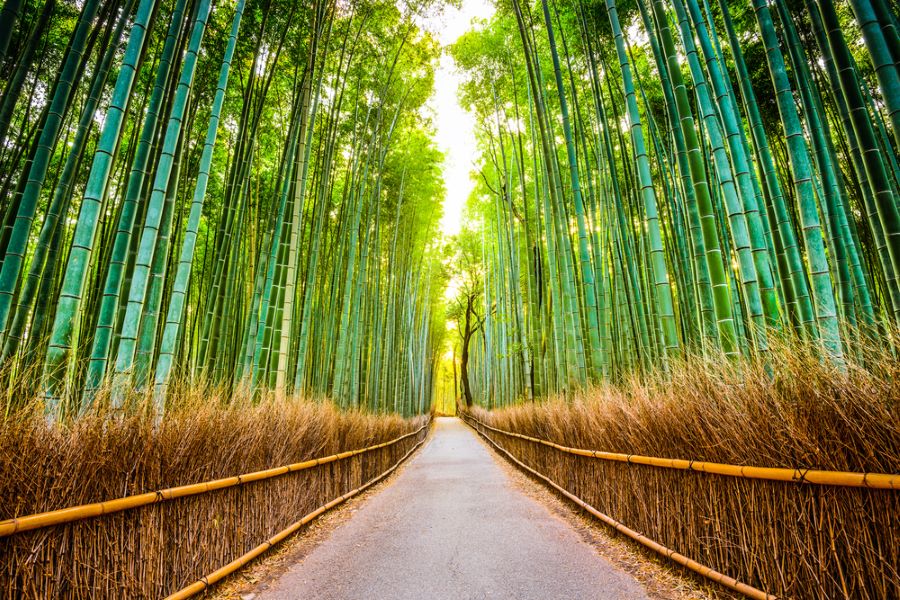Tucked away in the Arashiyama district on the western outskirts of Kyoto, Japan, lies a mesmerizing sight known to many as the Sagano Bamboo Forest, or the Arashiyama Bamboo Grove. Famous for its towering bamboo stalks that seem to defy both logic and gravity, this natural marvel has become an iconic representation of Japanese culture and aesthetics.
And the Sagano Bamboo Forest isn’t just a visual treat, either. It carries with it a rich history, dating back centuries. In Japan, bamboo is more than just a plant; it’s an integral part of daily life. It finds its place in construction, crafts, and art, symbolizing strength, and flexibility.

Sagano Bamboo Forest, Kyoto, Japan
One of the primary reasons for the bamboo grove’s increasing fame is its remarkable aesthetic appeal. Instagram and TikTok are replete with images and selfies, and for good reason. It’s a simply stunning sight. Think about standing amid towering bamboo stalks, densely packed, all reaching for the sky. The dappled sunlight filters through, creating a mesmerizing play of light and shadow. You hear the susurration of bamboo leaves rustling in the wind, a melody as timeless as nature itself.
The bamboo grove is also a beacon of cultural significance. It embodies the Japanese concept of wabi-sabi, which venerates the beauty found in imperfection, simplicity, and the transient nature of life. Numerous works of Japanese literature and art have showcased the Sagano Bamboo Forest, underlining its profound cultural importance. In recent times, thanks to social media, the forest has turned into a sought-after tourist attraction, enticing nature lovers, photographers, artists, and travelers seeking a momentary respite from urban chaos.
Getting to the bamboo forest is relatively hassle-free. From the Kyoto city center, you can board a train or bus to the Arashiyama area. Once you arrive, the bamboo grove is a short, pleasant walk from the station. To truly soak in the beauty of the grove, consider visiting during the early hours of the morning or late afternoon. This timing not only ensures fewer crowds but also bathes the grove in a soft, diffused light, enhancing its charm.
A designated walking path, approximately 500 meters in length, guides visitors through the bamboo forest’s core. Following this trail, you’ll also find yourself nearing other attractions, like the revered Tenryu-ji Temple. It’s imperative to remember that, to the Japanese, the bamboo grove is a gift of nature and should be treated with respect. Visitors are urged to minimize noise and avoid causing any harm to the bamboo, ensuring the preservation of the tranquility and pristine condition of the forest.
You Might Also Enjoy: Offbeat Travel: Japan’s Jigokudani Monkey Park
The Arashiyama area is also rich in other attractions. After your visit to the bamboo grove, explore landmarks like the aforementioned Tenryu-ji Temple, as well as the Iwatayama Monkey Park and the Togetsukyo Bridge. Depending on when you visit, the grove offers different experiences. Spring offers a backdrop of cherry blossoms, while autumn brings a riot of fall colors, each adding a distinct charm to the bamboo grove.
The Sagano Bamboo Forest is a testament to the beauty and history of Kyoto. It’s a place where nature, culture, and history intertwine, promising an unforgettable experience for all who venture through its paths.
Have you ever been to the Sagano Bamboo Forest? Tell us about it in the comments below!




Leave a Reply